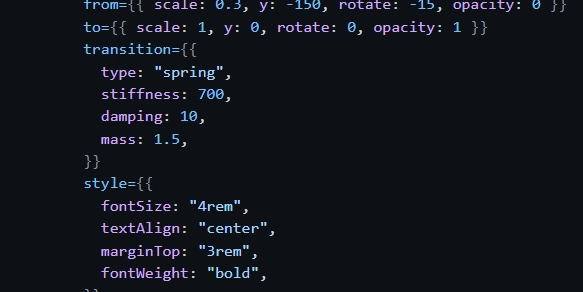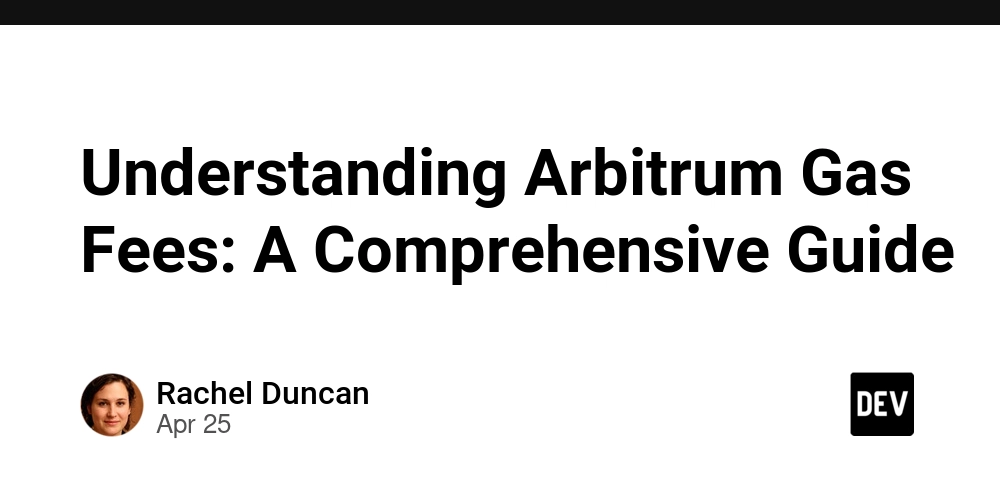Motiono - A React Animation Library Powered by GSAP
Motiono - A React Animation Library Powered by GSAP Motiono is a React library that simplifies creating smooth, interactive animations by leveraging GSAP (GreenSock Animation Platform). It provides a clean, declarative API for animating React components, giving developers the flexibility to animate built-in HTML elements and custom React components. With built-in GSAP integration, Motiono makes creating sophisticated animations easy without any external setup. This documentation will guide you through the installation, basic usage, available tags, API references, advanced usage, performance tips, and troubleshooting. Table of Contents Installation Basic Usage Available Tags API Reference motiono Component motiono.setGsapDefaults GSAP Integration Advanced Usage Performance Considerations Troubleshooting Installation You can install Motiono via npm: npm install motiono Basic Usage Motiono makes it simple to animate HTML elements. Once installed, import motiono into your React components and animate tags like you would with any standard HTML element. Example: Animate a Heading (h1) import { motiono } from "motiono"; export default function App() { return ( Hello World ); } In this example, the h1 element will animate from the defined from properties (small scale, offscreen, rotated) to the to properties (full scale, centered, no rotation). You can customize the animation using transition properties such as easing, stiffness, and damping. Available Tags Motiono supports a wide range of HTML tags that you can animate out of the box. These include: Text Tags: motiono.h1, motiono.h2, motiono.h3, motiono.h4, motiono.h5, motiono.h6, motiono.p, motiono.span, motiono.a Structural Tags: motiono.div, motiono.section, motiono.article, motiono.header, motiono.footer, motiono.nav, motiono.main, motiono.aside Form Tags: motiono.input, motiono.textarea, motiono.select, motiono.option, motiono.label, motiono.fieldset, motiono.legend Multimedia Tags: motiono.img, motiono.video, motiono.audio, motiono.canvas, motiono.iframe List Tags: motiono.ul, motiono.ol, motiono.li, motiono.dl, motiono.dt, motiono.dd Other Tags: motiono.blockquote, motiono.code, motiono.pre, motiono.em, motiono.strong, motiono.figure, motiono.figcaption, motiono.time, motiono.details, motiono.summary API Reference motiono Component The motiono component is the main entry point for creating animations in Motiono. It provides a simple and declarative interface for animating various HTML elements. Props Prop Type Description tag string (default: div) The HTML tag to animate (e.g., div, span, h1). from Object The starting properties for the animation (e.g., { scale: 0.5, y: -200, opacity: 0 }). to Object The ending properties for the animation (e.g., { scale: 1, y: 0, opacity: 1 }). fromTo Array ([from, to]) An array of two objects, defining both starting and ending animation properties. children React.ReactNode The content or child elements inside the animated component. className string CSS class name to apply to the element. style Object Inline CSS styles for the element. onComplete Function Callback fired when the animation completes. onStart Function Callback fired when the animation starts. onUpdate Function Callback fired on each update during the animation. duration number (default: 1) Duration of the animation in seconds. delay number Delay before the animation starts. paused boolean (default: false) Whether the animation starts paused. repeat number The number of times to repeat the animation. yoyo boolean Whether the animation should reverse on repeat. yoyoEase `boolean string {% raw %}ease `string Function` immediateRender boolean (default: false) Whether to render the element immediately or wait for the animation. stagger `number Object` onTween Function Callback that provides the tween instance for further manipulation. Example: console.log("Animation Complete")} > This is an animated div! motiono.setGsapDefaults This function allows you to set global GSAP animation defaults for all animations created via Motiono. You can apply settings like default easing and duration across your app without specifying them in every animation. Usage: motiono.setGsapDefaults({ ease: "power2.out", duration: 2, }); GSAP Integration Motiono integrates GSAP by default. You do not need to import GSAP separately unless you want more advanced control. This gives you the ability to use GSAP's full power when needed, but you can still create smooth animations using the declarative syntax. GSAP: Directly accessible for advanced animation logic. useGSAP: A custom hook to apply GSAP animations directly within your React components. Ex

Motiono - A React Animation Library Powered by GSAP
Motiono is a React library that simplifies creating smooth, interactive animations by leveraging GSAP (GreenSock Animation Platform). It provides a clean, declarative API for animating React components, giving developers the flexibility to animate built-in HTML elements and custom React components. With built-in GSAP integration, Motiono makes creating sophisticated animations easy without any external setup.
This documentation will guide you through the installation, basic usage, available tags, API references, advanced usage, performance tips, and troubleshooting.
Table of Contents
- Installation
- Basic Usage
- Available Tags
-
API Reference
- motiono Component
- motiono.setGsapDefaults
- GSAP Integration
- Advanced Usage
- Performance Considerations
- Troubleshooting
Installation
You can install Motiono via npm:
npm install motiono
Basic Usage
Motiono makes it simple to animate HTML elements. Once installed, import motiono into your React components and animate tags like you would with any standard HTML element.
Example: Animate a Heading (h1)
import { motiono } from "motiono";
export default function App() {
return (
<>
<motiono.h1
from={{ scale: 0.3, y: -150, rotate: -15, opacity: 0 }}
to={{ scale: 1, y: 0, rotate: 0, opacity: 1 }}
transition={{
type: "spring",
stiffness: 700,
damping: 10,
mass: 1.5,
}}
style={{
fontSize: "4rem",
textAlign: "center",
marginTop: "3rem",
fontWeight: "bold",
}}
>
Hello World
</motiono.h1>
</>
);
}
In this example, the h1 element will animate from the defined from properties (small scale, offscreen, rotated) to the to properties (full scale, centered, no rotation). You can customize the animation using transition properties such as easing, stiffness, and damping.
Available Tags
Motiono supports a wide range of HTML tags that you can animate out of the box. These include:
-
Text Tags:
motiono.h1,motiono.h2,motiono.h3,motiono.h4,motiono.h5,motiono.h6,motiono.p,motiono.span,motiono.a -
Structural Tags:
motiono.div,motiono.section,motiono.article,motiono.header,motiono.footer,motiono.nav,motiono.main,motiono.aside -
Form Tags:
motiono.input,motiono.textarea,motiono.select,motiono.option,motiono.label,motiono.fieldset,motiono.legend -
Multimedia Tags:
motiono.img,motiono.video,motiono.audio,motiono.canvas,motiono.iframe -
List Tags:
motiono.ul,motiono.ol,motiono.li,motiono.dl,motiono.dt,motiono.dd -
Other Tags:
motiono.blockquote,motiono.code,motiono.pre,motiono.em,motiono.strong,motiono.figure,motiono.figcaption,motiono.time,motiono.details,motiono.summary
API Reference
motiono Component
The motiono component is the main entry point for creating animations in Motiono. It provides a simple and declarative interface for animating various HTML elements.
Props
| Prop | Type | Description |
|---|---|---|
tag |
string (default: div) |
The HTML tag to animate (e.g., div, span, h1). |
from |
Object |
The starting properties for the animation (e.g., { scale: 0.5, y: -200, opacity: 0 }). |
to |
Object |
The ending properties for the animation (e.g., { scale: 1, y: 0, opacity: 1 }). |
fromTo |
Array ([from, to]) |
An array of two objects, defining both starting and ending animation properties. |
children |
React.ReactNode |
The content or child elements inside the animated component. |
className |
string |
CSS class name to apply to the element. |
style |
Object |
Inline CSS styles for the element. |
onComplete |
Function |
Callback fired when the animation completes. |
onStart |
Function |
Callback fired when the animation starts. |
onUpdate |
Function |
Callback fired on each update during the animation. |
duration |
number (default: 1) |
Duration of the animation in seconds. |
delay |
number |
Delay before the animation starts. |
paused |
boolean (default: false) |
Whether the animation starts paused. |
repeat |
number |
The number of times to repeat the animation. |
yoyo |
boolean |
Whether the animation should reverse on repeat. |
yoyoEase |
`boolean | string |
{% raw %}ease
|
`string | Function` |
immediateRender |
boolean (default: false) |
Whether to render the element immediately or wait for the animation. |
stagger |
`number | Object` |
onTween |
Function |
Callback that provides the tween instance for further manipulation. |
Example:
<motiono.div
from={{ opacity: 0 }}
to={{ opacity: 1 }}
duration={2}
ease="easeOutQuad"
onComplete={() => console.log("Animation Complete")}
>
<p>This is an animated div!</p>
</motiono.div>
motiono.setGsapDefaults
This function allows you to set global GSAP animation defaults for all animations created via Motiono. You can apply settings like default easing and duration across your app without specifying them in every animation.
Usage:
motiono.setGsapDefaults({
ease: "power2.out",
duration: 2,
});
GSAP Integration
Motiono integrates GSAP by default. You do not need to import GSAP separately unless you want more advanced control. This gives you the ability to use GSAP's full power when needed, but you can still create smooth animations using the declarative syntax.
- GSAP: Directly accessible for advanced animation logic.
- useGSAP: A custom hook to apply GSAP animations directly within your React components.
Example with GSAP:
import { useGSAP , gsap } from "motiono";
function App() {
const ref = useRef(null);
useGSAP(() => {
gsap.to(ref.current, { x: 200, duration: 1 });
});
return <div ref={ref}>This element will move</div>;
}
Advanced Usage
Animation Chaining
You can chain animations using GSAP's timeline API for more complex sequences:
const tl = gsap.timeline();
tl.to(".box", { x: 100, duration: 1 });
tl.to(".box", { y: 100, duration: 1 });
Custom Easing Functions
Motiono supports custom easing functions through GSAP:
import { gsap } from "motiono";
gsap.to(".box", {
x: 500,
duration: 2,
ease: "elastic.out(1, 0.75)",
});
Performance Considerations
To ensure good performance when using animations in a React app, keep the following points in mind:
-
Debounce re-renders: Motiono uses hooks like
useMemoanduseCallbackto minimize unnecessary renders. - Limit simultaneous animations: Excessive simultaneous animations can degrade performance, so optimize accordingly.
-
Use
requestAnimationFramefor smooth rendering: This is automatically handled by GSAP, but make sure you're not overwriting it in your animations.
Troubleshooting
-
Animation not triggering: Double-check the element's
reference and ensure
fromandtoproperties are properly defined. -
Unexpected results with
staggeroryoyo: Inspect your configuration for conflicting animation properties. -
Performance issues: Optimize animations by reducing the number of concurrent active animations or using
gsap.timeline()for grouped animations.
Motiono simplifies animation workflows in React by providing a default GSAP integration and an intuitive API for developers to create beautiful, performance-optimized animations with ease.





































































































































































![[The AI Show Episode 145]: OpenAI Releases o3 and o4-mini, AI Is Causing “Quiet Layoffs,” Executive Order on Youth AI Education & GPT-4o’s Controversial Update](https://www.marketingaiinstitute.com/hubfs/ep%20145%20cover.png)




























































































































![[FREE EBOOKS] Learn Computer Forensics — 2nd edition, AI and Business Rule Engines for Excel Power Users & Four More Best Selling Titles](https://www.javacodegeeks.com/wp-content/uploads/2012/12/jcg-logo.jpg)





![From Art School Drop-out to Microsoft Engineer with Shashi Lo [Podcast #170]](https://cdn.hashnode.com/res/hashnode/image/upload/v1746203291209/439bf16b-c820-4fe8-b69e-94d80533b2df.png?#)






































































































(1).jpg?#)































_Inge_Johnsson-Alamy.jpg?width=1280&auto=webp&quality=80&disable=upscale#)











































































































![Apple to Split iPhone Launches Across Fall and Spring in Major Shakeup [Report]](https://www.iclarified.com/images/news/97211/97211/97211-640.jpg)
![Apple to Move Camera to Top Left, Hide Face ID Under Display in iPhone 18 Pro Redesign [Report]](https://www.iclarified.com/images/news/97212/97212/97212-640.jpg)
![Apple Developing Battery Case for iPhone 17 Air Amid Battery Life Concerns [Report]](https://www.iclarified.com/images/news/97208/97208/97208-640.jpg)
![AirPods 4 On Sale for $99 [Lowest Price Ever]](https://www.iclarified.com/images/news/97206/97206/97206-640.jpg)
































![[Updated] Samsung’s 65-inch 4K Smart TV Just Crashed to $299 — That’s Cheaper Than an iPad](https://www.androidheadlines.com/wp-content/uploads/2025/05/samsung-du7200.jpg)



































































![Day 153/365 [Learning Full Stack]](https://media2.dev.to/dynamic/image/width=800%2Cheight=%2Cfit=scale-down%2Cgravity=auto%2Cformat=auto/https%3A%2F%2Fdev-to-uploads.s3.amazonaws.com%2Fuploads%2Farticles%2F8nbi1z0fon7j6nu7dt0b.png)
